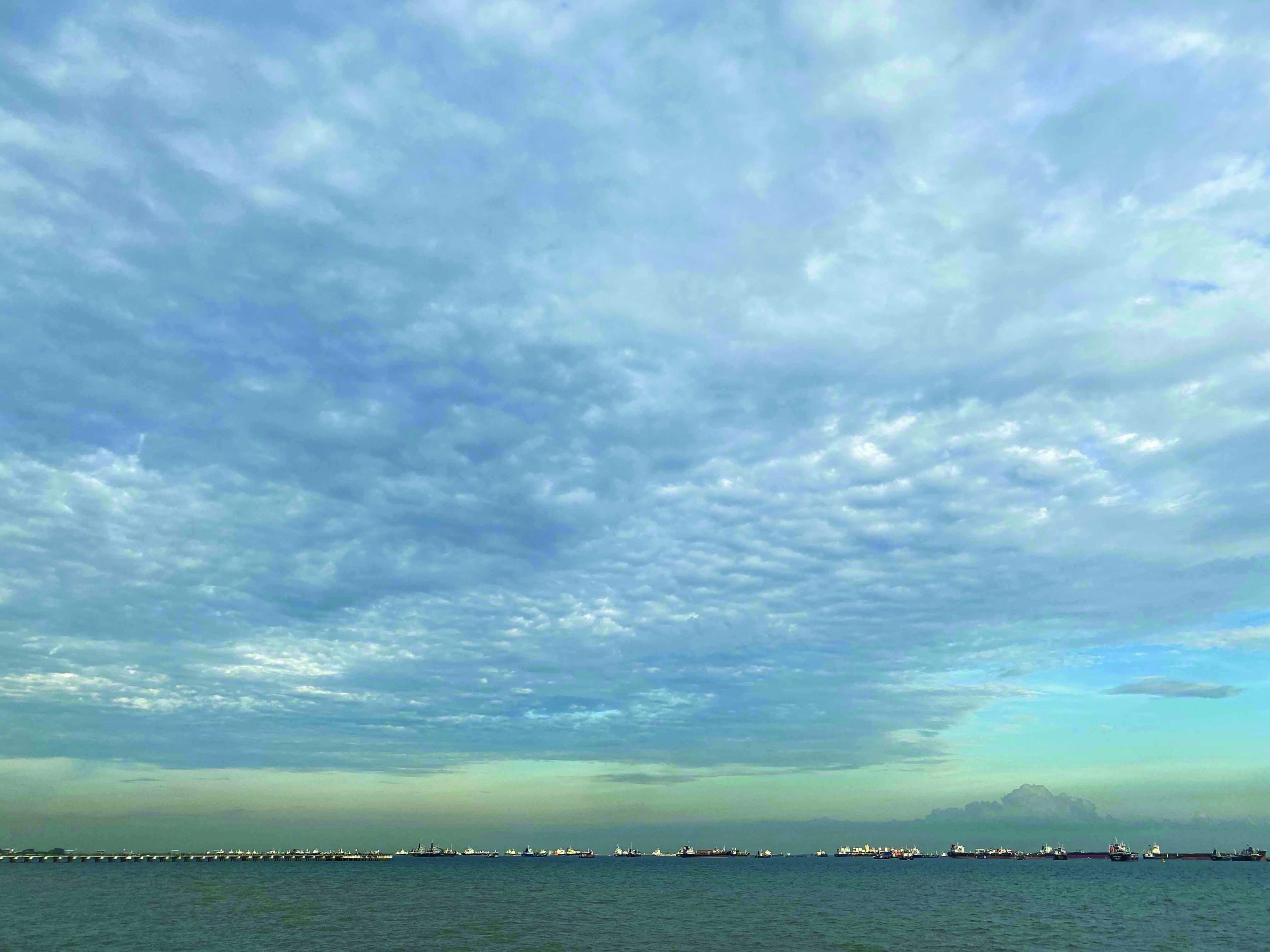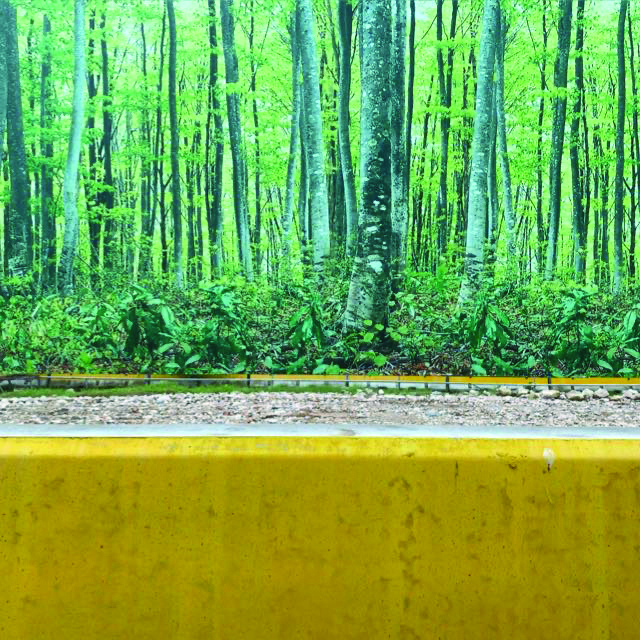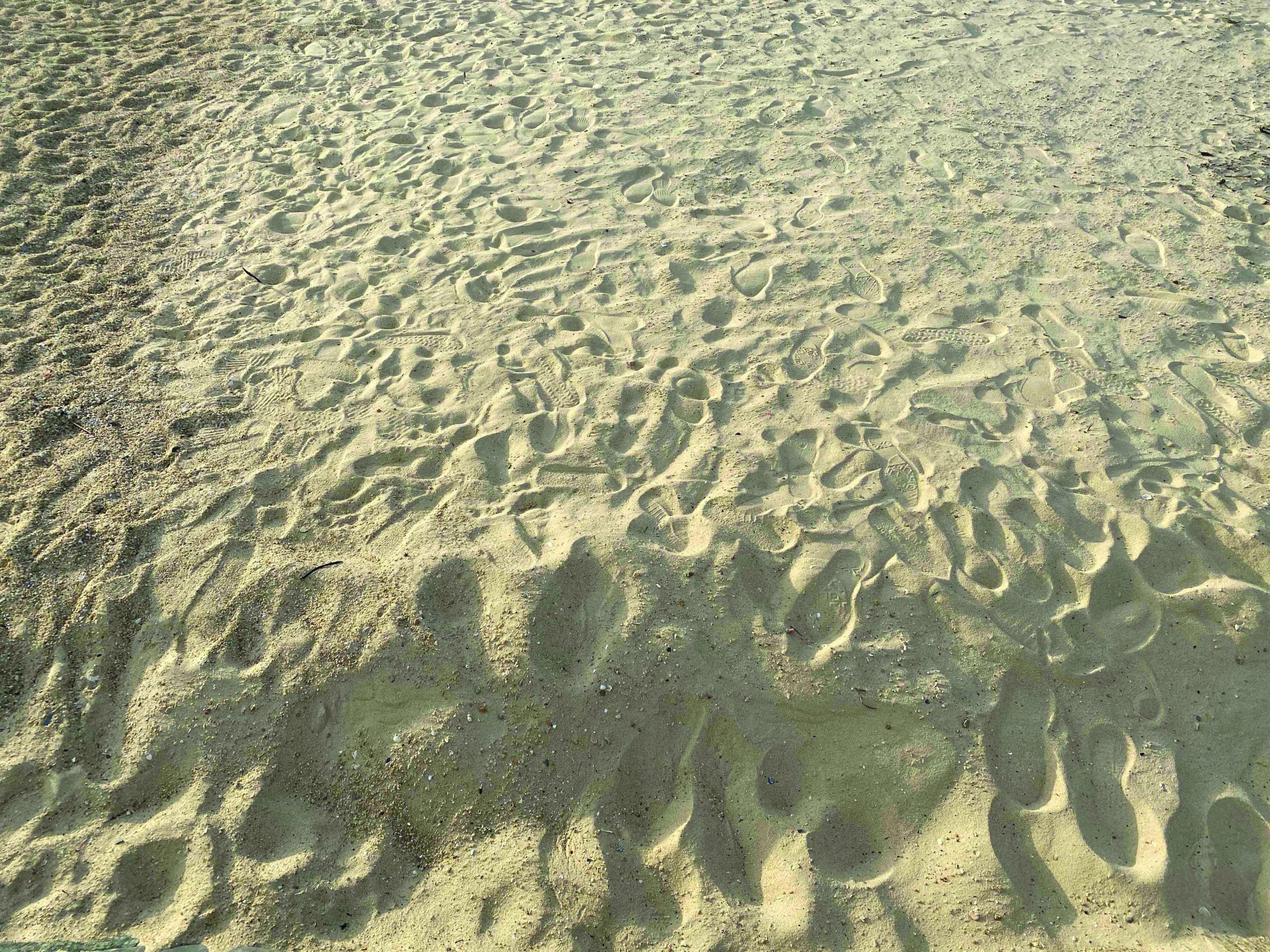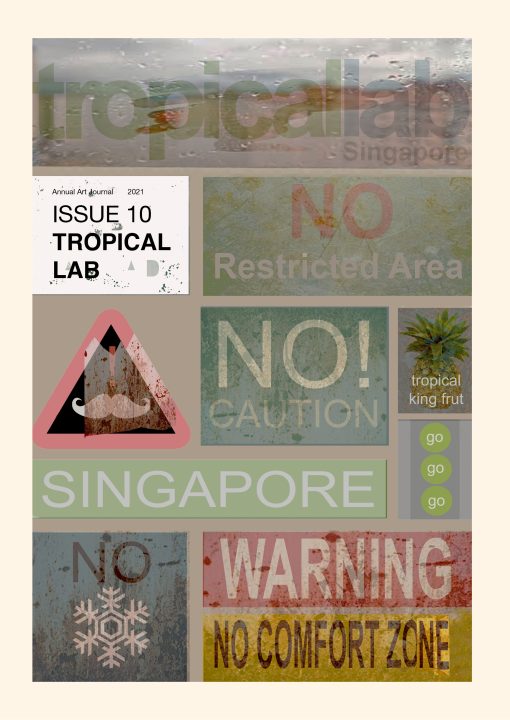Tropical Lab is an art camp where a group of graduate art students from around the world convene for 14 days on the island city, Singapore. The word ‘camp’ emphasises the distance and temporality of ‘being away’ from home, sharing new insights with strangers within scheduled events. At the art camp this often combines activities in the form of seminars, excursions, studio practice, dinner parties and an exhibition to mark the end of the visit. The camp is also a form of introduction to Singapore—a modern city with a relatively short history—itself a kind of cultural gateway and environment professing curiosity due to its combination of self-contained efficiency amidst restructured nature, groomed as part of the island’s aspiration of being a garden city.
Eden, Metropolis, Bauhaus, Arcadia, Shangri-La: stories about islands, the sun, moon and sea serve as archetypes ready to greet the impending arrival of fresh art graduates from around the world. Apart from major cultural cities with a longer history of art discourse, what is it like to experience art in this place? Assumptions between Western idealisms and Asian traditions are unpacked and put on hold as everyone focusses on the reasons to ‘why they make art.’ In graduate school, the emphasis to ‘study’ art reinforces the ‘making’ in art as a way to articulate perspectives and positions of what we know, think we know, and do not know about the world. The frustration, or if one is fortunate, the surrender to the realm of the unknown in life is often the reason we make art. This is akin to seeing reality dissolving while experiencing another form of its incarnation evolve and appear. Could this be the axis, the reason for adventure and experimentation to exist? If so, then where and when does this happen in an art school? What is the right environment to stimulate such experiences? Tropical Lab intends to provide this stimulus for a moment in time when the worlds of young artists come together.
One may ask what kind of art emerges from the heat of the equator within a community of visitors? There are two words which make up a concept of this environment: that of ‘tropical’ and that of ‘lab’. ‘Tropical’ is caricature and phenomena—of sun, trees, foliage, moisture and leave of absence, where the output of sweat, euphoria of exhaustion, the swatting of mosquitoes and consumption of prickly fruit provide fuel to the delights of artmaking whether as an individual or as a group; the ‘lab’ serves as a physical and mental space given to each graduate to stimulate creativity generated from the two-week time frame, reinforcing the nature of a new pattern to everyone’s ‘home’ routine. In line with the temporal nature of Tropical Lab, this studio is ‘makeshift’, often situated in an open space that is unused during the semester break of a local art school. Graduates inhabit this space openly, together with the rest of the participants—a form of transparency which suggests a mode for possible collaboration, encouraging physical, visual and conversational pursuits as they make their work. The example of collaboration is a sort of vehicle that unpacks and intensifies life’s complex instructions between and among people. This setting promotes an acknowledgment of ‘the social’ among the graduates. One of the aims of Tropical Lab is to break down the barriers between identities, as well as artistic and national subjectivities. In a sense, perhaps by the very act of collaboration, the ‘lab’ attempts ‘for a moment in time’ to restore the history of global miscommunication among us. The ‘lab’ is also housed in a school compound named LASALLE College of the Arts—an art school started in 1984 by its Irish founder Brother Joseph McNally, who is associated with the DE LA SALLE Brothers. the College itself has a history of art making, collaboration, study, exhibition, management and performance. Artists both local and around the world have had their share of memories and experiences as visitors to this campus: a constant site for discussions and presentations of art in forms both of the past and present, ignited as the contemporary.

East Coast Lagoon:1730 hours
The etiquette of discourse and exchange ensues the start of every Tropical Lab’s schedule, where the practice of introduction, presentation, lecture, enquiry and moderation play host to every new visitor in the form of a seminar within a venue. Most artists do not like to speak, simply because it is not their strength. It is common understanding that artists often find it hard to talk about art because of its elusive nature. But it is in these lectures that assigned interpreters of art, culture and language steer and guide our visitors to overcome this anxiety with textual topics; summaries; aims and timelines, engaging and preparing them mentally for Tropical Lab’s fully charged activities of varying temperaments. Its aim? To play, feed and indulge the senses.
Masak Masak (Malay for ‘to play around’), Urban Mythologies, Land, Echo: The Poetics of Translation, Island, Dreams, Citation:Déjà vu, Sense, Erase, Mobility are Tropical Lab’s survey of themes since its inception in 2005. These themes highlight ways in which we as beings make sense of this world in relation to our feelings towards our conception of differences, interpretations, disappearances, consciousness, space and movement. What have these themes got to do with the island of Singapore, where the old and new, rural and urban contend for significance visually, mentally and spiritually? Everything. From its ‘various beginnings’ as a trading port and colonial administration to its independence as a modern state of economy and investment, Singapore encompasses all of Tropical Lab’s themes associated with origins and change. Singapore’s origins in multiculturism with the influx of traders and merchants within Southeast Asia highlights and indicates its significance and early success as a trading port, attracting movement of people from the continents risking their lives to be part of the zeitgeist, to innovate with new skills of trade, establishing a pollination of businesses where language, food and technology serve as prominent ingredients to the early communities of the four races.
Food and community are an important part of Tropical Lab’s daily activities, whether the graduates are eating from packets of prepared food or dining at someone’s home. Keeping one’s appetite and stomach filled with appropriate amounts of rice, vegetables, sugar, salt and spices, nourishes and fuels the mind, body and soul of our visitors, energising them as they partake on research and work in the studio, notwithstanding the excitement to the given schedule of daily outdoor excursions negotiated by foot, bicycle or bus. Chicken Rice, Nasi Padang, Char Kway Teow, Fish Head Curry, Odek Odek…names of food repeat as mantric whispers of what not to forget. Food in Southeast Asia after all is an important topic, you will find people often have a discussion about food even after they have had their lunch or dinner. Perhaps it is an outlet for all things repressed—food as a metaphor for people’s deepest desires and fantasies. Speaking of desire, the characteristics of the durian, the king of fruits in Singapore is akin to a form of secret and myth, where one hears about its stench and prickly husk while discovering hidden within it, moist flesh that is ultimately creamy in its taste and texture.
The past of Singapore as environment is best experienced away from the city where, the reclaimed and constant constructions of new roads, complexes, old and new extrications take place. Ubin Island is not far from Singapore, where the remnants of the past and unkept nature can be found. It is a rural specimen for visitors to feel what it is like to live in the tropics within self-contained shops and restaurants. Coconut, seafood, a Chinese opera stage that I have never seen open and an empty basketball court are just a few makings of Ubin that I remember. To know Ubin, one needs to ride a bicycle, so as to roam the steep loops and valleys as one discovers the delights of reservoirs, coastal forest and mangrove swamps. The tour of this island is accompanied by guides made up of the host and ambassadors from LASALLE. Besides the visits to the designated attractions of Singapore, these selected graduates often introduce our visitors to the vicinities, familiarising them with the locals in relation to their everyday needs. Then there is also the adherences to the laws of Singapore, where guidelines to visual permissibility; social commentaries or expressions concerning degrees of nudity of the human body need to be respected. It is a thing that most of our guests comply with, though not without frustration and questions. So with an added pre-camp warning by organisers, the artists are reminded that they are ‘visitors’ to a country they do not live in, and above all, that they are accountable to their expressions of art (the outcome of the camp) as representatives of the universities they come from.

The Yellow Beam
The expression of art in Tropical Lab acts as ways to bring together art graduates from around the world while exposing two key aspects of what it is like to communicate as an artist: being able to deal with inherent readings of artworks as both a subjective and objective position concurrently. Where ultimately the struggles of understanding the context of viewing and experiencing art both as a maker and an audience is every artist’s uneasy task to negotiate. This can be challenging, especially among the diverse range and levels of disciplines inherent among the visitors, where introverts and extroverts exist in the form of personalities, speech, action and artforms. An example of such a comparison is that of the disciplines of performance art and painting, the first involves one’s faculties being present in the moment while the second, that of the accumulated past as action and image. As mentioned earlier, a lifespan of two weeks for an art camp means that the inner life of each artist has to play background to the exterior condition of subject matters that are more immediate. This does not mean that the work should not aim for complexity, but rather that form may need to be directly relatable before the fluidity of things is brought forth.
Despite the seemingly packed schedule of Tropical Lab, the camp environment suggests an atmosphere that is relaxed. This condition is perhaps cultivated by the camp leader Milenko Prvački, an artist and educator at LASALLE since 1994. The combination of seminar, physical activity, party, set up and presentation go hand-in-hand with the basic needs of eating, drinking, thinking and sleeping. Then there are the gaps in between, where ‘hanging out’ becomes just as important to cultivate the exchange of creative ideas. This is akin to ‘nongkrong’—an Indonesian phrase for ‘chill out’, where the mind and body has no agenda but to be calm and relax. It is often associated with drinking tea and chatting without formality and agenda. In Singapore, this can be a gathering to ‘space out’, tea time’ or ‘a smoke break’ to clear the mind from thinking about an idea for too long a time, like in art practice, when looking at and working on a work to the point of fatigue inhibits fresh ideas and effective decisions.
Teaching, learning art or art in the realm of academia is a balancing act, incorporating time lines, structured criticism, rubrics and numerical grades yet always empathetic to the intuitive, the reflexive, play and if appropriate, irony and subversion. Tropical Lab attempts to work with the above essentials gathered with the unification of a chosen theme as a guideline to situate the imaginary among the participants. One example of the imaginary in art is akin to thinking of the studio or lab that the visitors use as a brain. The brain, as mental or embodied state acting as metaphor of change; pumping one idea in and coming out with another. It is simultaneously allegorical, rational, scientific, metaphysical, chaotic and irrational at different times. Something complex can be formed from a source that is often simple like a sign, a quote from a conversation or a symbol. Ideas are like seeds, or dots that emit change as you stay and observe them. Then they may start to frustrate you, especially when you are getting close to an outcome. What is this outcome? Could it be the result of a momentary glimpse when each of us start to understand the systems of life before it vanishes? This is the elusive search in art making, for self, for all and for those waiting as an yet unknown audience.

East Coast Lagoon – Visitors
Then comes the exhibition that invites all who have pondered, desired, seen, remembered, encountered and discovered to present their works in LASALLE’s gallery spaces. These spaces are a combination of white cube, rectangular and L-shaped configurations that allow the artists to situate and locate their art objects, pictures, screenings and projections as things in or within space, whether framed as pictures, or negating it as suspension. Here, the graduates work and discuss their intentions among themselves, supported and led by the gallery’s technical crew and curator to ponder and resolve solutions. This culminates in the final experience of being together where an emotional mix of familiarity and nostalgia lingers with the presentation of everyone’s artworks, perhaps as individual symbols of a goodbye letter to the island of Singapore and its people.


